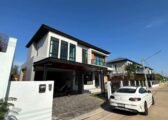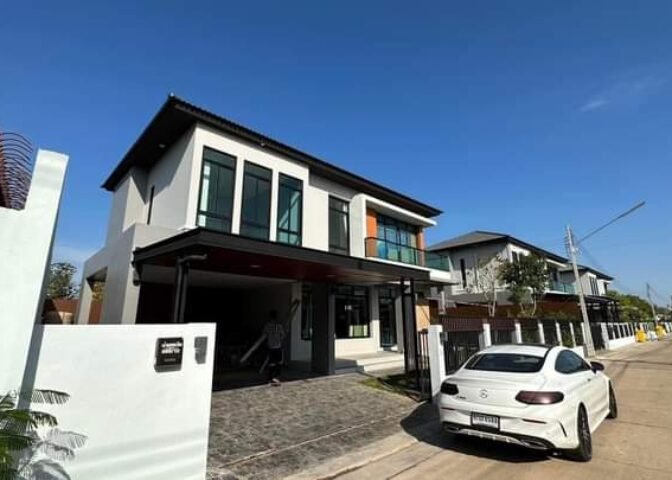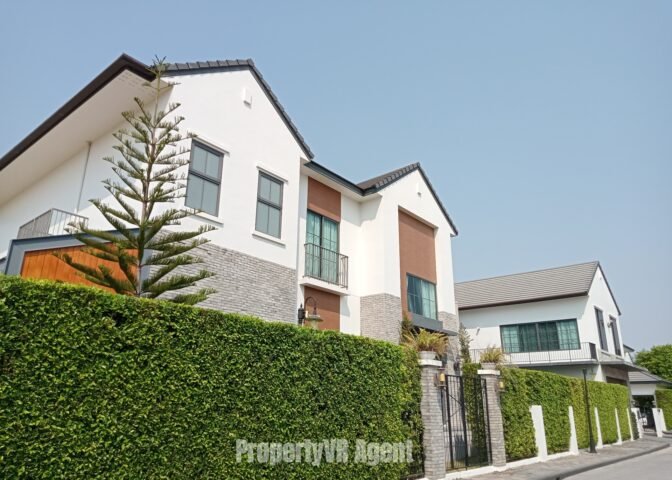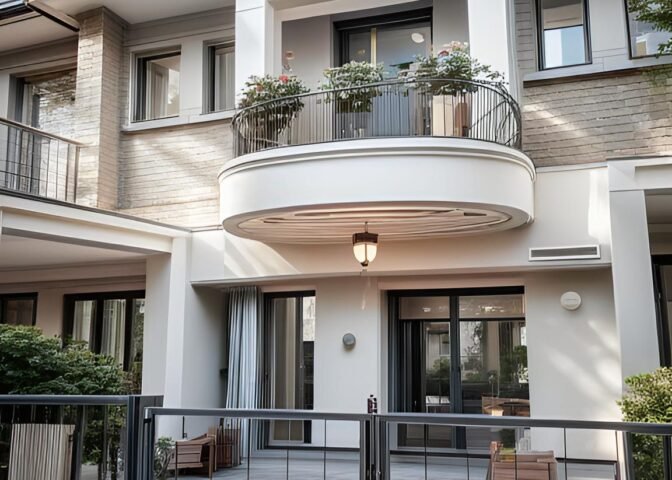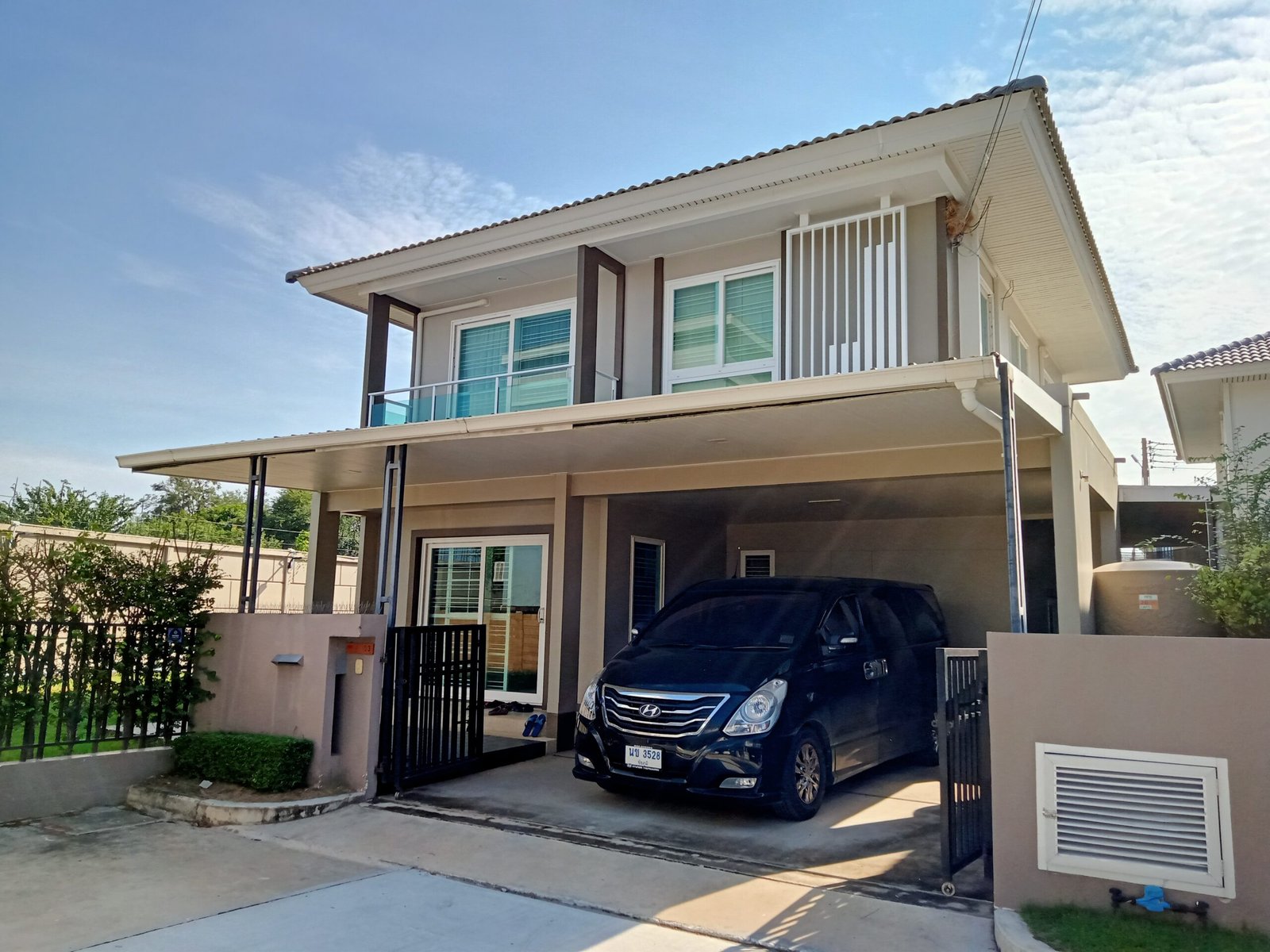Introduction to Affordable Housing in Khon Kaen
Khon Kaen, a prominent city in northeastern Thailand, has been experiencing significant economic and demographic transformations. As a central hub for education, commerce, and transportation, the city has attracted an influx of people from surrounding regions. This urbanization, coupled with population growth, has led to an increased demand for affordable housing within the city.
One of the driving forces behind Khon Kaen’s burgeoning population is its strategic location and infrastructure development. With initiatives such as the high-speed rail project connecting Khon Kaen to other major cities, the city is becoming an attractive destination for both businesses and residents. This economic development has stimulated job creation, further enticing individuals and families to relocate to Khon Kaen in search of better opportunities.
Despite the economic advantages, the influx of residents has posed challenges in the housing market. The demand for affordable housing has outpaced supply, leading to rising property prices and rental rates. Many residents find it difficult to secure housing that meets their financial capabilities, highlighting the disparity between income levels and housing costs. This issue is particularly acute among low- and middle-income families who struggle to find adequate accommodation within the city.
Addressing the need for affordable housing is crucial for Khon Kaen’s sustainable growth. Providing access to affordable and quality housing not only improves living standards but also fosters economic stability and social cohesion. Initiatives to develop affordable housing options are imperative to ensure that all residents can benefit from the city’s progress and prosperity.
In conclusion, the growing demand for affordable housing in Khon Kaen is driven by urbanization, population growth, and economic development. As the city continues to evolve, addressing the challenges in the housing market will be essential to support its sustainable growth and ensure a high quality of life for its residents.
Government Initiatives and Policies
The Thai government, recognizing the critical need for affordable housing in Khon Kaen, has implemented a range of initiatives and policies designed to address this growing demand. At the forefront of these efforts are subsidies and financial incentives aimed at making housing more accessible for low and middle-income families. These subsidies often take the form of direct financial assistance or reduced interest rates on home loans, thereby lowering the overall cost of homeownership.
In addition to subsidies, tax breaks have been introduced to further encourage both property developers and homebuyers. Developers are often granted tax incentives for constructing affordable housing units, which not only reduces their financial burden but also promotes the development of more affordable homes across the city. Homebuyers, on the other hand, benefit from tax deductions on mortgage interest payments and other related expenses, making it easier for them to invest in property.
Public-private partnerships (PPPs) have emerged as a pivotal strategy in the government’s approach to affordable housing. These collaborations between the public sector and private developers aim to leverage the strengths of both parties, combining public funding and private expertise to expedite the construction of affordable housing projects. Such partnerships often result in the creation of well-planned communities that include essential amenities and infrastructure, thereby enhancing the quality of life for residents.
While these initiatives have made significant strides in addressing the housing needs of Khon Kaen’s residents, there remains room for improvement. One area where enhancements could be made is in the transparency and efficiency of subsidy allocation. Streamlining the application process and ensuring that subsidies reach the intended beneficiaries promptly could further bolster the efficacy of these programs. Additionally, ongoing monitoring and evaluation of public-private partnerships can help identify best practices and areas for optimization, ensuring that future projects are even more successful.
Overall, the government’s initiatives and policies have laid a strong foundation for affordable housing in Khon Kaen. By continuing to refine these measures and address any existing challenges, the government can better meet the housing needs of its growing population, ensuring that all residents have access to safe, affordable, and quality homes.
Innovative Solutions and Private Sector Involvement
Addressing the affordable housing shortage in Khon Kaen demands innovative solutions and significant private sector involvement. Private developers, NGOs, and community organizations are crucial in creating affordable housing projects that cater to the city’s growing population. Successful case studies illustrate the potential impact of these initiatives. For instance, a notable project by a leading real estate developer integrated mixed-income housing, where a portion of units is allocated for low-income families, thereby fostering inclusive communities.
NGOs have also played a pivotal role in spearheading affordable housing initiatives in Khon Kaen. By partnering with local governments and leveraging international funding, these organizations have managed to construct cost-effective housing units. One such example is an NGO-led project that utilized locally sourced materials and volunteer labor to significantly reduce construction costs, making homeownership a reality for many low-income families.
Community organizations contribute by mobilizing local resources and fostering a sense of ownership among residents. These organizations often implement sweat equity programs, where future homeowners contribute labor in exchange for reduced housing costs. This approach not only makes housing more affordable but also instills a sense of pride and responsibility among residents.
Innovative construction technologies are another avenue for reducing housing costs and increasing accessibility. Modular construction, for instance, offers a promising solution by allowing homes to be built off-site in controlled environments, which reduces waste and accelerates the building process. This method has been successfully implemented in various affordable housing projects worldwide and holds significant potential for Khon Kaen.
Sustainable building practices are equally important in creating affordable housing. Utilizing energy-efficient materials and renewable energy sources can lower long-term utility costs for residents, making homes more affordable in the long run. Projects incorporating green building techniques not only provide economic benefits but also contribute to environmental sustainability, aligning with the global shift towards more eco-friendly urban development.
Future Outlook and Recommendations
The future of affordable housing in Khon Kaen is promising, yet it is not without its challenges. As the city continues to grow, the demand for affordable housing is expected to increase, necessitating a proactive approach from all stakeholders. Emerging trends in the housing market indicate a shift towards more sustainable and community-focused developments. This trend aligns well with the broader global movement towards environmentally friendly living spaces and integrated community planning.
One of the primary challenges will be ensuring that affordable housing projects can keep pace with the rapidly growing population. Policymakers must consider the diverse needs of Khon Kaen’s residents, including low-income families, young professionals, and the elderly. To address these needs, a multi-faceted approach is required. Enhancing regulatory frameworks to streamline the development process and reduce bureaucratic hurdles can significantly expedite housing projects. Moreover, adopting inclusive zoning laws that encourage the development of mixed-income neighborhoods can help integrate affordable housing seamlessly into the broader urban landscape.
Collaboration between various sectors is crucial. Public-private partnerships can leverage the strengths of both government resources and private sector innovation. Such collaborations can lead to the development of cost-effective and high-quality housing solutions. Additionally, non-profit organizations and community groups should be actively engaged in the planning and implementation phases to ensure that the housing projects genuinely meet the needs of the community.
Recommendations for developers include incorporating sustainable building practices and using innovative construction technologies to reduce costs and improve efficiency. Developers should also focus on creating housing that is not only affordable but also accessible and appealing to a wide range of residents. This includes considering factors such as proximity to public transportation, availability of green spaces, and access to essential services.
Overall, the future outlook for affordable housing in Khon Kaen is optimistic. By fostering collaboration, enhancing regulatory frameworks, and aligning housing developments with the needs of the city’s diverse population, Khon Kaen can continue to improve the affordability and availability of housing. This holistic approach will ensure that all residents have access to safe, affordable, and sustainable living environments, contributing to the overall well-being and prosperity of the city.


